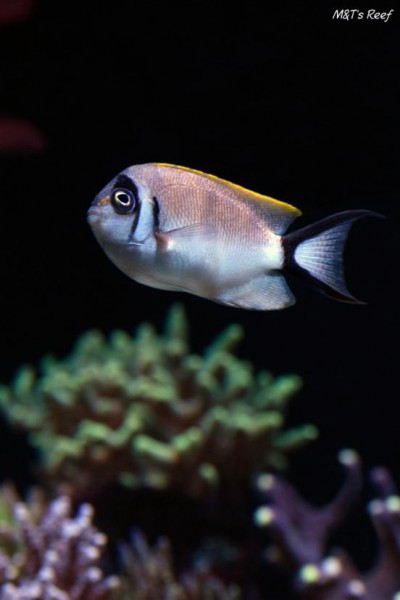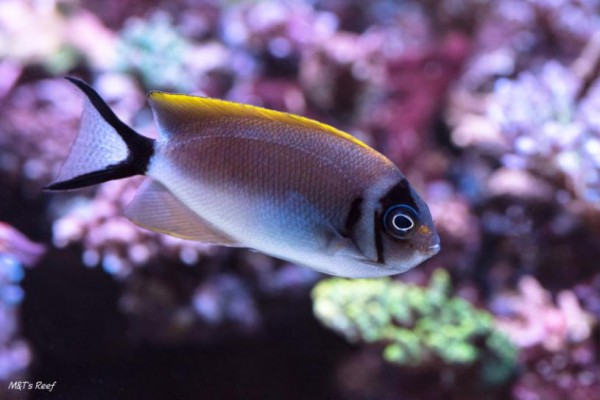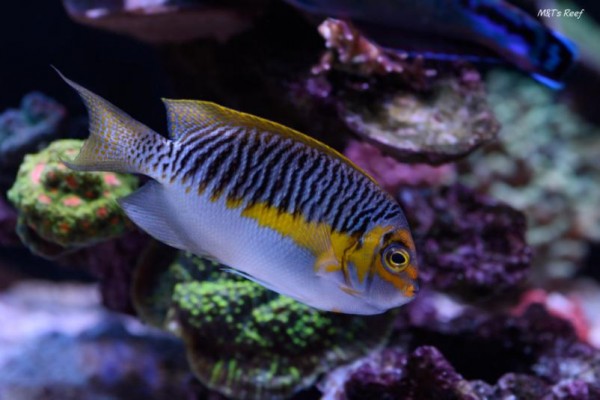The Japanese Swallowtail Angelfish: A True Asian Beauty
The Japanese Swallowtail Angelfish
A True Asian Beauty
Genicanthus semifasciatus
The Japanese Swallowtail Angelfish is a true beauty to behold. Males are gorgeous with irregular vertical bars on the upper body, mask-like yellow markings on the head and face which extend into a stripe on the mid-body, and yellow spots on the dorsal and tail fins. And while they do not have the striking markings and coloration of the males, females have a subtle beauty of their own. G. semifasciatus females are grayish brown above and white below, with yellow on the dorsal fin, black markings on the head and a black outline on the tail.
Angelfish of the Genicanthus genus, also referred to as Swallowtail Angelfish, due to their deeply lunate (crescent shaped) tails, are zooplanktivores making them great candidates for reef aquariums.
As with all Genicanthus angels, G. semifasciatus is sexually dichromatic, meaning males and females differ in coloration. Their social organization and mating system is haremic in nature. In the wild, harems are formed with a dominance hierarchy amongst the males where the largest male exerts dominance by displaying at and chasing subordinates. The dominant male also spawns with females more often than subordinate males.
In the home aquarium, G. semifasciatus can be kept singly, in pairs, or in large aquariums, over 200 US gallons (757 liters), in small harems consisting of one male and 2 to 3 females. They may also be kept with other Genicanthus angelfish, but limited to one male. Since they are protogenous hermaphrodites (females change sex to male), you may choose to add two or more females and one will eventually make the change to male. This usually occurs once the female reaches a total length of 9.5 to 13cm (3.7 to 5.1 in.) and once initiated, takes about six weeks to complete.
G. semifasciatus is not aggressive, but it should be noted that they may chase smaller planktivores such as Anthias, Fairy Wrasses and Flasher Wrasses.
Quick Stats
- Minimum Tank Size: 90 to 100 US gallons (approx 340 to 380 liters
- Care Level: Moderate
- Temperament: Peaceful
- Reef Compatible: Yes
- Temperature: 70 to 77º F (21 to 25º C)
- Salinity: 1.020-1.025
- Maximum Size: Approx. 8”
- Diet: Omnivore
- Family: Pomacanthidae
Click here to visit our fish discussion forum to ask a question or post your experience!
References:
Michael, S.W. 2004. Angelfishes & Butterflyfishes. Microcosm. Shelburne, VT. 344 pp.
Fenner, Robert, 2014, Angelfishes for Marine Aquariums: Diversity, Selection & Care, CreateSpace Independent Publishing Platform 94 pp.





Leave a Reply
You must be logged in to post a comment.